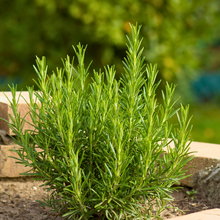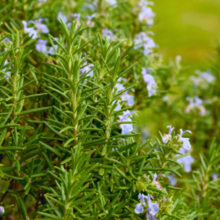Rosmarinus officinalis, commonly known as rosemary, is a fragrant evergreen shrub prized for its aromatic leaves and culinary uses. This plant features needle-like, grey-green leaves and produces small, pale blue or purple flowers in spring and summer. Its upright growth habit and strong fragrance make it a valuable addition to herb gardens, rockeries, and containers, adding a touch of Mediterranean charm and flavour to various settings. It belongs to the Lamiaceae family.
Origin: Rosmarinus officinalis is native to the Mediterranean region.
Light: Rosmarinus officinalis thrives in full sun. It requires at least 6-8 hours of direct sunlight per day for optimal growth and fragrance.
Water: Water sparingly, especially once established. Allow the soil to dry out thoroughly between waterings. Overwatering can lead to root rot.
Soil: Rosmarinus officinalis prefers well-drained, sandy or gravelly soil. It thrives in alkaline to neutral soil. Avoid heavy clay soils, which can retain too much moisture.
Fertilising: Rosmarinus officinalis is not a heavy feeder. Fertilise sparingly in spring with a balanced slow-release fertiliser. Avoid over-fertilising, as this can lead to excessive foliage growth at the expense of flavour.
Pruning: Prune lightly after flowering, removing spent flower heads and trimming back any leggy growth. In early spring, you can prune back harder to maintain shape. Avoid pruning into old wood.
Pests and Diseases: Rosmarinus officinalis is generally resistant to pests and diseases, but keep an eye out for root rot, especially in poorly drained soils, and occasionally spider mites.
Uses: Rosmarinus officinalis is primarily grown as a culinary herb for its aromatic leaves, which are used to flavour a wide range of dishes. It's also grown as an ornamental plant for its fragrant foliage and flowers. It is a popular choice for herb gardens, rockeries, containers, and hedging.
Toxicity: Rosmarinus officinalis is generally considered non-toxic to humans and pets. However, it is always best to keep plants out of reach of pets and children who might try to eat them in large quantities.



